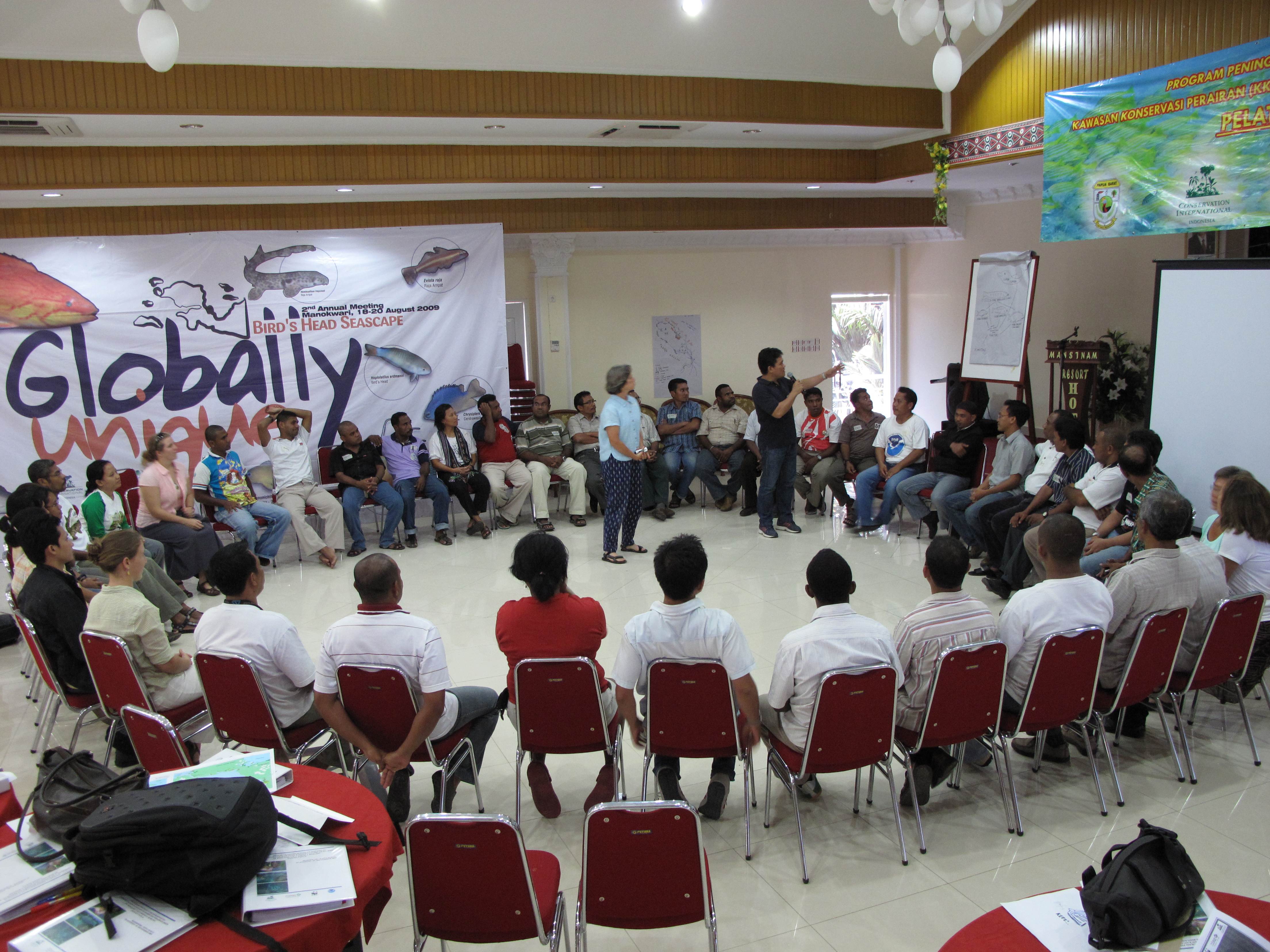Adequate capacity and co-management institutions
Local MPA Leader Kris Thebu. Copyright Conservation International.
MPA Training. Copyright Conservation International.
To build effective local management, the BHS coalition actively sought out and recruited energetic community leaders to take on MPA management roles and then spent the next six years systematically building their capacity to effectively manage their marine resources through targeted training programs and one-on-one mentorship. The BHS team launched a comprehensive MPA Management Capacity Building Program in partnership with the provincial government and the U.S. National Oceanic and Atmospheric Administration (NOAA). The program was designed to turn local village leaders, local MPA practitioners, and local government officials into highly effective and exemplary MPA managers.
The coalition also worked directly with local and national government to develop Indonesia’s first MPA co-management governance system and helped create new government MPA management institutions into which the local community MPA teams could be embedded. These new institutions also required considerable capacity development support as they strengthened their institutional management capacity. Through this investment, the MPA network is now managed locally through and legally recognized partnership between local communities and the local government.
• Strong community commitment
• Support from government
• Legal framework
• Willingness of leaders to take the role as MPA managers
• Technical and financial support for targeted trainings and mentoring
Government commitment is key to achieve the necessary framework and thus approval of the MPA co-management system. Implementation needs a government agency in charge, and the legal framework for a board with flexibility and autonomy to manage fixed funding sources and recruit non-civil servants. National and local-level policy and legislation provide the legal basis for the MPA network and the mandate for effective implementation of MPA management plans, zonation systems, and regulations. Overlapping jurisdiction for the management of individual MPAs and the national network plan must be considered early.
The commitment to hiring locally and then investing in capacity building is considered critical to the long-term success of the MPA network. The approach demonstrates that community-driven conservation at scale is possible: true bottom-up, community-driven conservation does not have to be limited to small scales and local communities can manage very large scale MPAs effectively.


